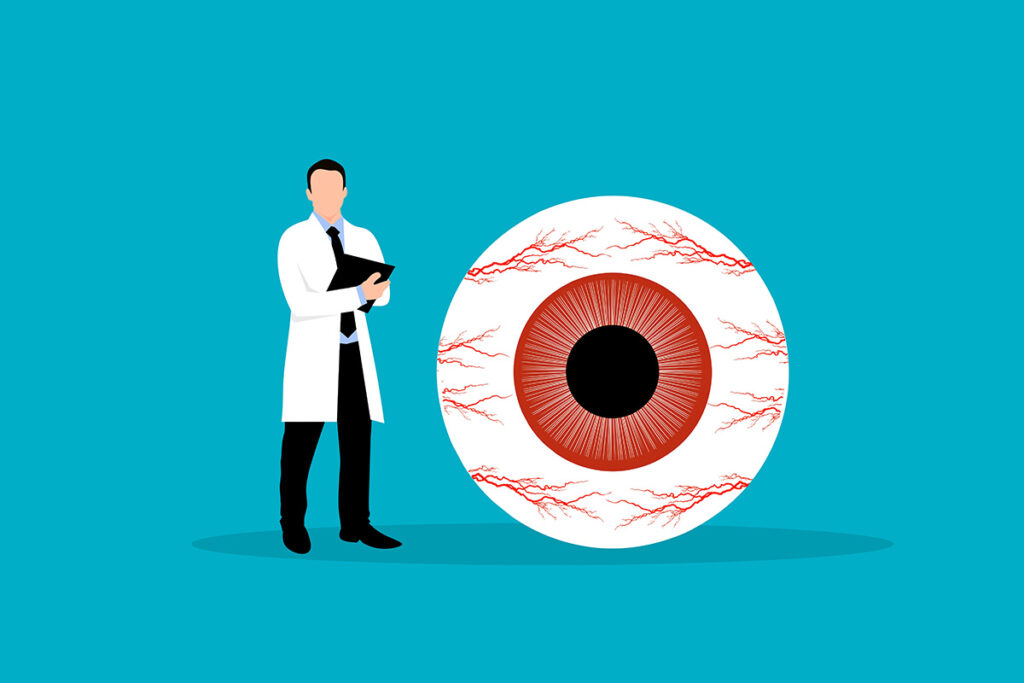Dry eye disease is a prevalent eye condition that occurs when the eyes do not produce enough tears or do not create quality tears, leading to an uncomfortable and often irritating sensation. This condition can affect anyone and becomes more common with age, affecting around 5-30% of the population in different age groups worldwide. In this article, we will dive into the causes, symptoms, diagnosis, and treatment options for dry eye disease.

What is Dry Eye Disease?
Dry eye is a condition in which the eyes do not produce enough tears or produce tears of poor quality that cannot effectively lubricate the eyes. The commonly reported symptoms include:
The severity of the condition can vary. In some cases, dry eye disease can result in swelling, inflammation, and even permanent loss of vision.
- Dryness of the eye
- Itching or burning sensation
- Excessive watering of eyes
- Sensitivity to light
- Eye fatigue
The severity of the condition can vary. In some cases, dry eye disease can result in swelling, inflammation, and even permanent loss of vision.
Treatment Options for Dry Eye Disease
There are several treatment options available for managing dry eye disease.
At-Home Remedies
Some at-home remedies can be effective in reducing dry eye symptoms, such as:
- Blinking More Frequently: By consciously blinking your eyes more frequently when reading or using your computer, you can help balance the tear film and keep the eyes lubricated.
- Warm Compresses: Place a warm compress on your eyelids may help increase the oil secretion in the meibomian glands, which can make your tears richer and more comfortable.
- Hydration: Drinking enough water can help keep your eyes well hydrated from the inside.
In-Office Treatments
For more severe cases of dry eye disease, in-office treatments can be effective. Some notable in-office treatments for dry eye include:
Dry eye disease affects millions of people worldwide and can significantly impact their quality of life. From simple lifestyle adjustments to medical treatments, many options are available to manage dry eye symptoms effectively. In-office treatments such as LipiFlow, OptiLight IPL, LLLT with IPL, and BlephEx have shown promising results in providing long-term relief for dry eye conditions. OptiLight IPL treatment is an innovative procedure that uses intense pulsed light to treat dry eye disease, while LipiFlow focuses on restoring the function of the glands that produce the lipids. By adopting the necessary treatment or adopting at-home remedies, you can maintain healthy, comfortable eyes and improve the quality of life. Remember to follow a healthy diet rich in Omega-3 fatty acids, adequate hydration, and eye protection to help alleviate the symptoms of dry eye disease. Speak to an Optometrist at Dr. Sam Dhaliwal and associates today to find a treatment plan that works best for you.
- Optilight IPL: It is a new treatment that involves emitting brief pulses of light onto the eyelids to penetrate and heat up deeply clogged meibomian glands. By doing so, the treatment can help unclog them, and in turn, improve your eyes’ tear film.
- LipiFlow: LipiFlow targets dry eye disease that comes from blockages in the Meibomian glands. The treatment involves applying gentle pressure to the eyelids, while also heating and massaging them to help soften the gland clogs. This process can help improve the quality and amount of oil in your tears.
- IPL with LLLT: It is an advanced light therapy treatment that uses both pulsed light and low-level light therapy to stimulate the meibomian glands’ function. The treatment helps to reduce inflammation, break down blocked oils, and encourage a healthy tear flow.
- BlephEx: It is a non-invasive treatment that uses a medical-grade pad to exfoliate the eyelids’ skin and remove excess bacteria and debris causing dry eyes.
Dry eye disease affects millions of people worldwide and can significantly impact their quality of life. From simple lifestyle adjustments to medical treatments, many options are available to manage dry eye symptoms effectively. In-office treatments such as LipiFlow, OptiLight IPL, LLLT with IPL, and BlephEx have shown promising results in providing long-term relief for dry eye conditions. OptiLight IPL treatment is an innovative procedure that uses intense pulsed light to treat dry eye disease, while LipiFlow focuses on restoring the function of the glands that produce the lipids. By adopting the necessary treatment or adopting at-home remedies, you can maintain healthy, comfortable eyes and improve the quality of life. Remember to follow a healthy diet rich in Omega-3 fatty acids, adequate hydration, and eye protection to help alleviate the symptoms of dry eye disease. Speak to an Optometrist at Dr. Sam Dhaliwal and associates today to find a treatment plan that works best for you.

